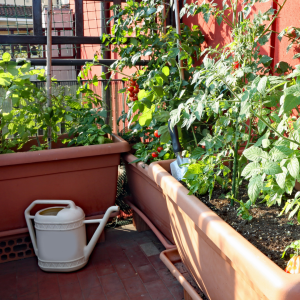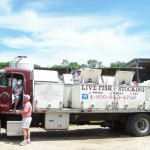 Rooftop gardens in New York. Beekeeping in the middle of Fort Smith. Planting yourself a pandemic-inspired victory garden. Urban Agriculture takes many forms and has been around as long as people have lived in communities. Evidence of urban ag dates back as far back as Mesopotamia, so, yeah, a really long time.
Rooftop gardens in New York. Beekeeping in the middle of Fort Smith. Planting yourself a pandemic-inspired victory garden. Urban Agriculture takes many forms and has been around as long as people have lived in communities. Evidence of urban ag dates back as far back as Mesopotamia, so, yeah, a really long time.
Throughout history, there have been significant events, usually war or economic collapse, that have caused surges in people taking it upon themselves to produce their own food. Allotment gardens in Germany, Pingree’s Potato Patches in Detroit during an 1893 depression, and citizen gardening across the United States, Canada, and the United Kingdom during WWII are all examples of surges in urban agriculture.
But how do you get started with your own urban farming?
Listen, if you’re anything like me, you get the idea that you want to grow your own food and, before you know it, you’ve bought 87 plants and a flock of chickens that you have no idea what to do with. So, before you get too carried away, take a breath, and follow these few steps:
Come up with a plan.
And not just a plan, but a realistic plan. Coming up with a plan is a several step process; here are a few things for you to consider:
Determine how much space you have to garden. Here’s your opportunity to get creative. Vertical farming, a practice of growing crops vertically, can be a game changer if you’re working with a small space.
Decide what you want to focus on. Again, this can be difficult. But take the time to think about what you actually want to grow. What will you make the most of? What do you have the space to grow? Because, keep in mind, some plants need up to two feet between plants, using up a lot of your limited space. This is a lesson I learned when I decided I needed a dozen zucchini plants, but only had the space for a handful. More is not necessarily more.
For advice on what to plant and how many plants you should buy, talk to someone at your local Coop. They are a wealth of knowledge and are always willing to share.
Buy the proper containers and soil.
Before you invest money in an urban gardening project, read the growing information for your particular plants to determine which containers you’ll need. Some plants don’t need a lot of root room, while others need space to spread out. Do a little research before you invest in containers to save yourself the aggravation. Again, ask for help when you visit your local Coop.
Soil is crucial. But, whether you choose Miracle Gro, Happy Frog, or some other brand of soil, what you really want to focus on is drainage. The last thing you want is soggy roots.
Sun exposure.
Before you buy a single thing, it’s important to know how much sun your gardening space will be exposed to. It’s Arkansas, and it is going to get hot. Plants that are heat and drought resistant will fare better than plants that are a little more sensitive to heat.
The key to a victorious victory garden comes down to space, soil, and sun. For guidance, visit with your Coop crew; they’re happy to help.
Ryanne Harper



